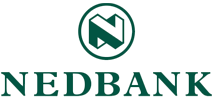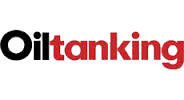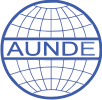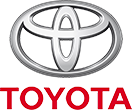Recession is a difficult time for any industry, and IT spend is the first to be criticized. Now is the perfect time to gain a competitive edge by investing in innovation and flexibility. Improve the image of IT in your organisation by reducing business costs, improving business processes, and enhancing the system usability. This white paper explains how this economically difficult time is your opportunity to shine.
Benefits of SAP Workflow:
- Eliminate human error
- Reduce process times
- Increase vendor / customer satisfaction
- Improve the SAP user experience
- Reduce business process costs
- Measurable return on investment
- Full audit trails
If you don’t know much about SAP Workflow, have a quick read here to get an overview.
The IT world has already been affected by news of the global recession with CIOs facing shrinking budgets, limiting new projects, and prospects of staff layoffs. CFOs increasingly cast their critical eyes on the till to realise most IT shops are behemoths on the spending front. For large companies, SAP budget/spend often runs into 10s or even 100s millions of rands which takes up a significant portion of the overall IT budget. As a result, it gets special attention/scrutiny from CFOs. Their conversations with their IT counterparts often involve a butcher knife in one hand and ready to slice IT budget on the fly.
While seasoned SAP & IT professionals who have been through the early-90s recession and the more recent Internet bubble have seen all this before, there’s a need across the board to re-think strategy in the face of radically reduced budgets.
Ironically this can be a time of enormous opportunity for IT departments: cutting costs, increasing flexibility and proving an ability to generate returns while others are wringing their hands will mark out winners from losers over the next 18-24 months, and IT is at the heart of this internal efficiency transformation.
Listen carefully to the needs of the business
Economic downturns create a tighter focus on value, which means IT departments are under more pressure than ever to demonstrate quantifiable improvements for money spent. Business users often feel victimised through the process of SAP implementation which often forces the business to adapt to a generic set of business processes. It is at these times, their complaints become more vocal than ever.
It is now the time to listen to their needs and address their concerns and negative perception of IT as during tough times, unpopular and costly SAP department can be a toxic combination. Usability is often a key issue for the majority of SAP users, addressing key areas of pain in usability can go a long way to improve user productivity, perception and cut training costs.
It is time for innovation and flexibility
During time of recession, successful businesses do not just slash their IT budgets – they look for investments in IT innovations to create new efficiencies and to be first out of the traps when market conditions change. The key to survival in the current environment is characterised by much shorter innovation cycles and the requirement to get goods and services to market more quickly.
SAP traditionally positions its products as tools to provide enterprises with a competitive edge. With many large enterprises now running SAP, your organisation may not be all that different from competitors in terms of its IT infrastructure. The time to innovate is now.
Engage smaller SAP consultancies
Business advantage can prove short-lived as economies contract, dramatically increasing competition. This drives a need for radical change without the budgets normally associated with this kind of re-invention.
Traditionally CIOs have felt secure using large SAP consultancies with the ability to pull together large project teams to support R multi-million installations often with 2-3 year time frames. In the current economic climate there are a number of factors that undermine this approach:
- Large consultancies often won’t engage in smaller, sub-R500k SAP projects. With massive overheads and large teams from pre-sales to account management to project delivery, they just can’t mobilise the right resources for smaller more nimble deliveries. With a limited SAP budget, smaller consultancies are far better positioned to respond to your needs.
- With a skills investment strategy often defined years in advance, bigger consultancies build large resource pools around established technologies. This acts as a block to innovation, where more agile consultancies are free to explore new techniques as soon as they become available and compete on innovation rather than raw manpower.
- Smaller companies tend to be more responsive and focused on client needs. Demanding projects more quickly for less investment is exactly the sort of challenge growing consultancies relish, where larger businesses may simply refuse.
Smaller companies are typically more responsive, flexible and innovative. Due to their low overheads, they can also be very cost effective with smaller projects. If you’re looking for SAP innovation delivered in the shortest possible timeframe and at lowest possible cost, it is time to engage smaller SAP consultancies.
Rethink/reprioritise your SAP upgrade strategy
SAP has traditionally released products and made major changes to underlying functionality on a 5-year schedule. However in recent years, this cycle has shortened to 2-3 years due to their diversification in products such as CRM and Enterprise Portal – there have been 5 major releases of CRM in the space of just 8 years.
For companies with global deployments, multi-terabyte databases, and tens of thousands of users, an upgrade project is often disruptive, expensive and deeply unpopular. SAP recognised and acknowledged this problem in the recent years. With the shipment of its ERP 6.0 product, instead of bundling 2-3 years of product enhancements and technology improvements into one massive release, SAP has now moved to what it calls a continuous innovation strategy by releasing smaller enhancement packages.
But what if you’re not on ERP 6.0 and have other SAP products? In the current tough business conditions, businesses are less likely to have the appetite to spend large sum of money and face significant business disruption to take on major upgrade projects just to take advantage of some functionality improvements. There is an alternative.
You could build solutions on top of your existing SAP platform to provide the additional functionality that the business demands, without embarking on a major upgrade programme. More functionality in a fraction of the time and at far lower cost leads to vastly reduced risk and much faster return on investment.
Maximise your existing SAP investment
CIOs who worked with SAP before 1999 would know that SAP was known as a one-product company, which had a much less confusing naming convention for its products and releases (R/1, R/2 and R/3). Since then, SAP has accumulated dozens of products with a large set of options, variants and names such as Customer Relationship Management, Product Life Cycle Management, and Business Intelligence etc. This diversification strategy aimed to sell new products and licenses to new and existing customers. SAP product licenses are not cheap. With the recent hike in maintenance cost, a business case which involves buying product licences, cost of implementing and customising the standard product, deployment, getting new infrastructure/support capabilities and paying annual maintenance cost can be an extremely difficult proposition to present to the board.
Therefore, similar to the upgrade question, you can/should look to maximise your investment in existing SAP solutions. With introduction of NetWeaver and Web Application Server, SAP has effectively exposed itself as a technology platform. With its support for Service Oriented Architecture (SOA), it allows customers and partners to use it to extend SAP applications or even build brand-new application. This provides the opportunity for SAP customers to develop new functionalities utilising innovative technology on top of your existing SAP platforms such as ERP rather than making new product acquisitions. The list of potential savings include: no additional license/maintenance cost, infrastructure and you can leverage existing skills. Adding these up, the savings should start to make a lot of sense.
Apart from utilising your SAP solution as a technology platform for extending existing functionality, another quick win can come from a simple audit of your existing SAP products and licenses. Unless you have done one recently, you may be surprised how many shelfware products and licenses you have got and been paying for which your business is not utilising. With the recent SAP maintenance cost hike, you can potentially save your business a lot of money just by doing a simple audit.
Change before you have to – Jack Welsh
CIOs have an opportunity to act now before the recessionary economy forces them to. The easy option is to stop projects, get rid of contractors, layoff staff and go into ‘maintenance mode’, but this won’t help your business gain competitive advantage, which it critically needs to survive and emerge stronger.
Adopting a more flexible approach and strategy for different times to continue to deliver value to the business can help making SAP/IT the true differentiator in supporting the business to remain competitive during the time of recession.
Reference: Recession Proof Your SAP Strategy









